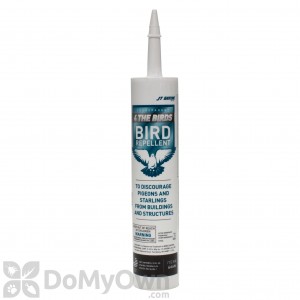How to Get Rid of Birds
Birds are creatures of habit. They easily become dependent on humans for food and shelter. It is always easier to keep birds away or to drive them out early than to get rid of an established flock. When exploring different methods of bird control, remember that all birds are federally protected under the Migratory Bird Treaty Act except for the common pigeon, the house sparrow, and the European starling.
As with most types of pest control, an effective bird pest control program will incorporate the Integrated Pest Management (IPM) approach. There are five broad components (or steps) in bird pest control IPM:
- Survey - Identify which birds are present, how many, and what problems they are causing or may cause.
- Sanitation - Sanitation is always the most important component of any pest control program. Sanitation efforts for bird pest control are most effective when birds are finding food and/or water at the nesting or roosting site.
- Exclusion and Habitat Alteration - The best way to keep birds off of or out of a structure is to make it impossible for them to roost and nest there. Exclusion may be as simple as repairing a window or involve complex bird netting or wiring installation. Blocking access into a structure is highly effective in preventing pigeon and sparrow nesting, though sparrows in particular are quite adept at finding entry points. Eliminating spaces such as where commercial signs are attached to buildings and where air conditioning units are installed will prevent nesting.
- Repellents - Different forms of repellents are used to scare birds or to make roosting areas uncomfortable. The most common bird repellents are tactile, mechanical, taste, sound, and visual repellents.
- Tactile chemical repellents, such as gels and sprays, are nontoxic to birds and create an uncomfortable, warming sensation on birds' feet or bodies, rendering landing sites undesirable.
- Mechanical repellents include bird spikes, bird wire, and toothed repellent strips which are installed on ledges, light fixtures, or any other flat surfaces where birds would otherwise land.
- Taste Repellents are nontoxic sprays applied to crops to make the fruit, grain, or bean unpalatable to pest birds.
- Sound repellents are mechanical devices that emit distress calls or sirens to frighten and disperse birds. These are most effective in areas like crop fields, warehouses, and food plants rather than urban areas (where birds are accustomed to various sounds)
- Visual repellents usually mimic predators to scare birds away from a particular area. Visual deterrents should be moved frequently to remain effective.
- Tactile chemical repellents, such as gels and sprays, are nontoxic to birds and create an uncomfortable, warming sensation on birds' feet or bodies, rendering landing sites undesirable.
- Population Reduction - Bird population reduction programs are very involved and should only be considered when handling the worst bird problems. Population reduction efforts include baiting, trapping, and shooting, but avoiding non-target birds can be very difficult. Many states restrict the use of avicides and shooting.
Bird Control Products
4 The Birds Repellent Gel
Viw all Bird Control Products
Related Articles
How To Get Rid of Geese
How To Get Rid of Swallows
How To Get Rid of Pigeons
How To Get Rid of Sparrows
How To Get Rid of Starlings
How To Get Rid of Woodpeckers




